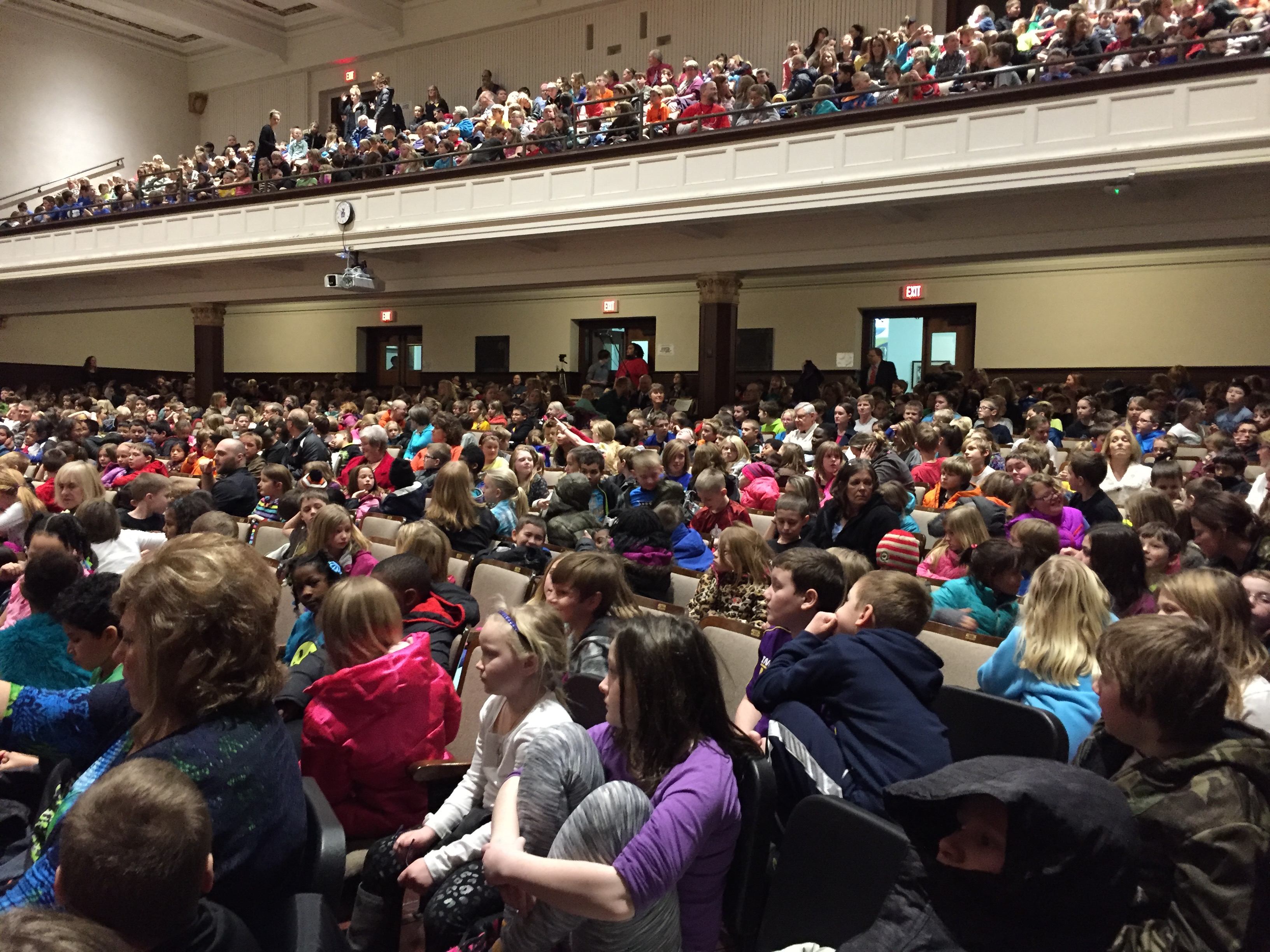Full House for Winona Symphony Orchestra’s Children’s Concert
In 1907 the Musical Literacy Society in Winona offered a young violinist and music teacher the opportunity to be the founding conductor of a brand new orchestra. Much like today, Winona was a thriving arts community and it was excited to expand into the area of live symphonic music. Carl Ruggles went on to achieve fame as a composer and painter (inspired by Rockwell Kent, whom he had befriended in Winona). And what Ruggles started in a small town in Minnesota has lived on.
Under Ruggles’ baton, the orchestra performed for sold out audiences at the Winona Opera House. In February of 1910, a Children’s Concert was added to the schedule. We are not exactly sure what inspired Ruggles to reach out to the young audience, but we do know that young boys frequently crept into the back of the rehearsal hall just to hear him shout. His colorful language was famous around the community.
For the 2015-2016 season, the Winona Symphony Orchestra brought back the tradition of performing for children. On February 23, 2016, close to 950 elementary students, teachers, and chaperones filled the Harriett Johnson Auditorium in Somsen Hall. The young people patiently but excitedly filed into the auditorium. The room went quiet when Director Donald Lovejoy approached the microphone to welcome them.
First on the program was “The Musicians of Bremen”, a Grimm Brothers fairy tale with music by Bernard Rogers. Through the music from the orchestra and storytelling by narrator Jim Danneker, the audience learned the story of a donkey, a dog, a cat, and a rooster who joined together to escape the usual fate of old farm animals. Each animal was represented by a different musical instrument and theme.
What followed was an exploration of the percussion section with Dr. Seuss’ “Gerald McBoingBoing” (music by Gail Kubik). This is a story of a young boy who does not speak in words but in sound effects. Dr. Rich MacDonald “spoke” for the hero of the story using almost everything in his percussion tool-chest. The favorite sound was the “boing” created when striking and simultaneously raising the timpani’s pitch.
Both stories kept the audience musically engaged and had happy endings that carried the children back to their schools with smiles on their faces. The students in attendance will soon have the opportunity to select a musical instrument and begin their own musical journeys through their schools. This concert was designed to inspire them to take that first step and develop a lifelong love of live symphonic music. Due to the overwhelming success of the Children’s Concert, the Winona Symphony Orchestra has plans to make this an annual event.
It would likely have been hard for Carl Ruggles to imagine that one day more than a dozen big yellow school buses – filled to the brim – would deliver young people to hear the Winona Symphony Orchestra. Quite a lot has changed in 100 years, but live symphonic music remains. The orchestra’s final concert of the year will be held on May 1, 2016 at 4:30pm in the Performing Arts Center at Winona State University. Details are available at winonasymphony.org.


